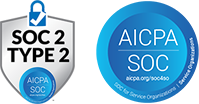What Is Future of Work?
The Future of Work is the evolving state of how, where, and why work gets done. It blends automation, artificial intelligence, hybrid workplaces, skills-based hiring, and agile organizational design. Instead of fixed roles and locations, value is created by fluid teams using data, digital tools, and continuous reskilling.
Why Future of Work Matters
Work models are shifting faster than policies, tech stacks, and skills. Organizations that adapt early cut talent risks, control costs, and outpace competitors. Those that don’t face skill shortages, disengaged teams, and inefficient structures. Treating the Future of Work as a strategic program—not a buzzword—keeps your workforce ready for what’s next.
Where Future of Work Is Used
- Workforce Planning: Skills taxonomies replace job titles; analytics forecast gaps years ahead.
- Hybrid & Remote Models: Teams blend on-site collaboration days with focused remote work.
- Automation Programs: RPA and AI handle repeatable tasks—humans shift to judgment and creativity.
- Learning & Development: Microlearning, talent marketplaces, and internal gigs keep skills current.
- Policy & Benefits: Flexible hours, wellness support, and location-agnostic pay structures reflect new realities.
Future of Work Key Benefits
- Agility: Rapid team formation and redeployment around priorities.
- Cost Efficiency: Real estate, travel, and manual-processing costs drop with digital-first operations.
- Talent Access: Broader geographic pools and diverse skill sets fuel innovation.
- Employee Experience: Flexibility and clear growth paths lift engagement and retention.
- Better Decisions: People analytics guide hiring, reskilling, and org design with evidence—not guesswork.
Best Practices & Examples
- Skills Cloud + Internal Marketplaces: Map every role to skills; post short-term gigs internally so talent flows to demand.
- Hybrid Playbooks: Define which tasks need in-person time versus async collaboration. Share team-level charters, not one-size rules.
- Automation Governance: A cross-functional council prioritizes bots and AI use cases, tracks savings, and reskills affected staff.
- Always-On Listening: Pulse surveys, collaboration-tool data, and exit signals feed a live dashboard for experience and productivity.
- Scenario Planning: Quarterly “future sprints” model economic, tech, and regulatory shifts—HR, Finance, and IT align responses in advance.
Conclusion
The Future of Work isn’t a date on a slide—it’s a continuous redesign of jobs, skills, and workplaces. Organizations that combine flexible policies, robust people analytics, and relentless upskilling build resilience and speed. Make experimentation normal, measure what matters, and your workforce will be ready for 2030, 2050, and whatever comes next.
Future of Work FAQs
Q: What is a future of work?
It’s the ongoing transformation of work models driven by technology, demographics, and employee expectations—shifting from fixed roles and locations to skills-based, flexible, data-informed setups.
Q: What is the future of work in 2050?
By 2050, AI and robotics will automate most routine tasks; humans focus on creativity, ethics, and complex problem solving. Lifelong learning, portfolio careers, and global virtual teams dominate.
Q: What is the future form of work?
A blended model: hybrid locations, outcome-based schedules, project-driven teams, and platforms that match skills to gigs—supported by automation and real-time collaboration tools.
Q: What is the future of work in 2030?
By 2030, most firms will use skills marketplaces, predictive workforce analytics, and flexible benefits. Employees expect continuous reskilling, remote options, and transparent career paths powered by data.




